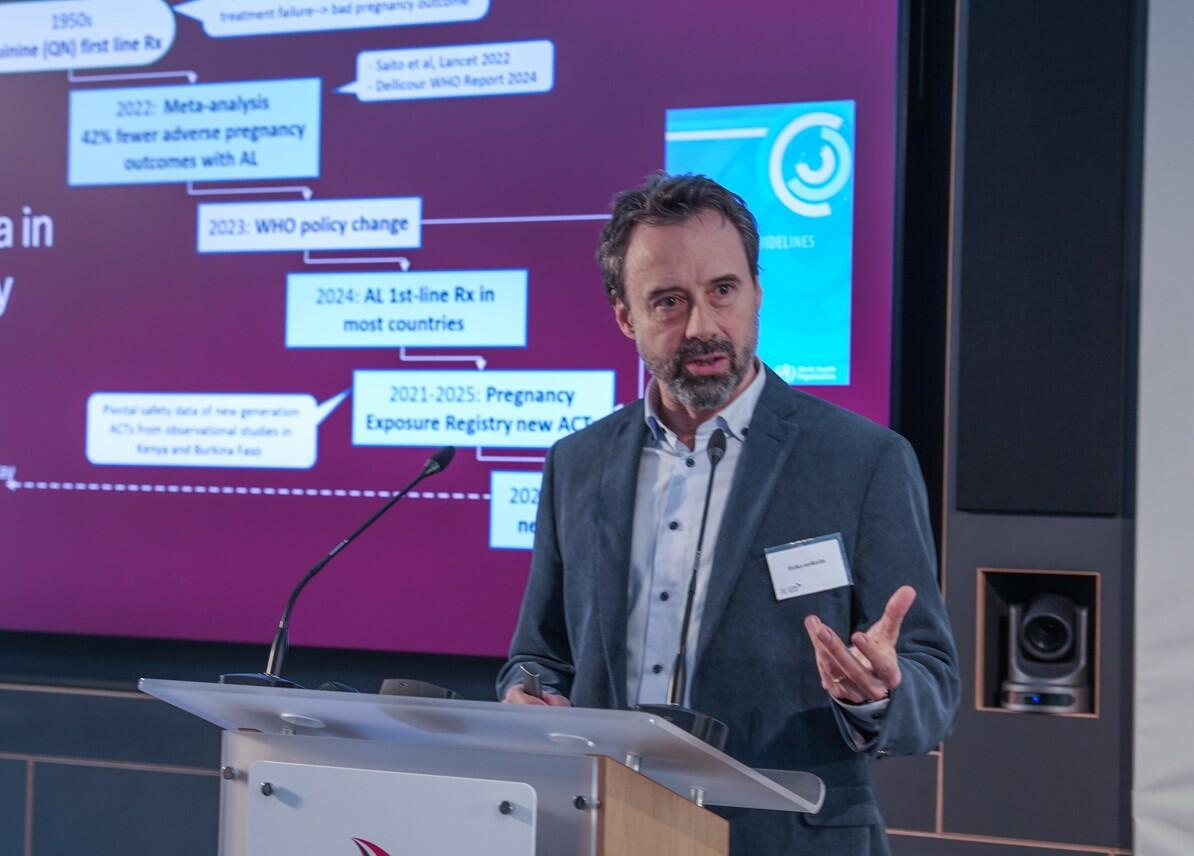
By Professor Feiko ter Kuile
Results announced this week at the American Society of Tropical Medicine and Hygiene annual meeting in Toronto demonstrate that GanLum (ganaplacide/lumefantrine) a potential new malaria treatment, was shown to work as well as standard artemisin therapy in a Phase III trial. The KALUMA study, conducted across 34 sites in 12 African countries including our long-term partners at KEMRI in western Kenya, enrolled 1,688 patients and reported a cure rate of 99%. This exceeds the 95% threshold generally considered indicative of high therapeutic efficacy.
The timing of these results is significant. Artemisinin-based combination therapies have been the main drugs used for malaria treatment for over 25 years. However, resistance to artemisinin has emerged as a major public health threat. First documented in Southeast Asia in the early 2010s, artemisinin partial resistance has now been detected in East and Southern Africa. Whilst current therapies remain effective for now, the emergence of resistance in high-transmission African settings requires proactive development of new treatments with different mechanisms of action.
Subject to authorisation, GanLum would represent the first novel antimalarial drug treatment introduced since artemisinin-based combination therapies became standard care in 1999. This is a very exciting development for malaria control.
GanLum employs ganaplacide, a novel compound that disrupts the parasite's internal protein transport systems, which are essential for its survival inside red blood cells. This mechanism differs fundamentally from artemisinin and partner drugs, potentially offering efficacy against parasites carrying resistance mutations. Additional findings include rapid activity against the transmissible forms of the parasite, suggesting potential use in reducing onwards spread of malaria infection.
The symposium generated considerable attention within the malaria research community, reflecting both the rarity of such advances and the substantial pharmaceutical investment required for diseases affecting low-income populations. Regulatory approval processes remain ahead. A critical factor for uptake will be the pricing strategy, as affordability is a major driver of adoption by malaria endemic countries. Subject to authorisation, GanLum would represent the first novel antimalarial drug treatment introduced since artemisinin-based combination therapies became standard care in 1999. This is a very exciting development for malaria control.